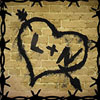Terezin
A concentration camp for Central European Jews, Terezin was also known by its German name, Theresienstadt.
At times, the Nazis used this so-called “model ghetto†for propaganda purposes. In June 1944, after a frenzied period of superficial improvements, they turned parts of the camp into a fake town and agreed to let the International Red Cross inspect it. The presence of uniformed Jewish ghetto police was intended to convey the impression that the camp was governed by Jews.
In reality, the prisoners endured continual hunger, disease, and overcrowding. Of the 140,000 people who passed through Terezin 33,000 died there, mostly of starvation and illness. The inmates lived with the constant threat of deportation, as they were regularly transported to Auschwitz and other camps in Poland.
Yet TerezÃn was not a place of unrelieved horror. Between transports, some of the well-known musicians and performers who were among the prisoners were allowed to stage operas, plays, concerts and cabarets. Ironically, their theatrical productions were often freer of censorship than those in the rest of Nazi-occupied Europe, as the Nazis did not bother to censor the inmates whom they considered doomed.
In the fall of 1944, 11 transports were sent to the East and most of the men were deported. Women took over the men’s jobs and children had to work as well. The Unlucky Man in the Yellow opens just before the prisoners learn about the first of the 11 transports.
